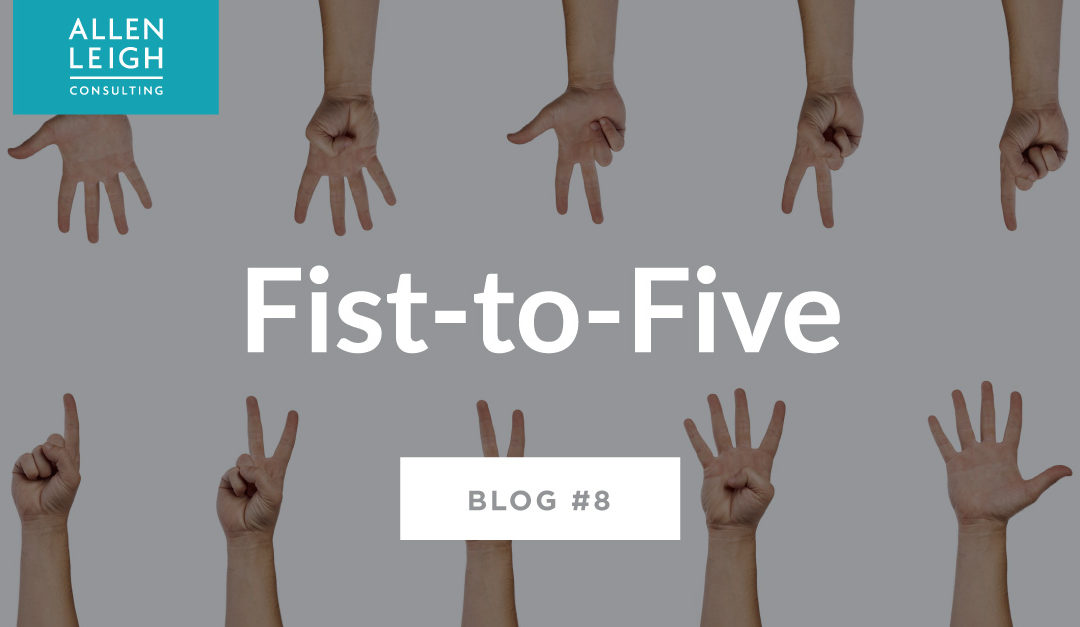Although it’s not completely clear where the Fist-to-Five originated, many attribute it to the American Youth Foundation who began using it in 2004. This team exercise is a simple time saver as it’s a quick, effective way to check-in with the group, learn what people think and reach consensus. Use the Fist-to-Five to begin discussion on a recurring subject, check in on a project or part way through a meeting to see what direction the rest of the meeting needs to take as it can quickly get you past less important topics and onto major items. Too often in meetings, time is spent discussing and arguing over the small things leaving the big topic items untouched. The Fist-to-Five is an immediately impactful tool that will accelerate decision-making, group buy-in and reduce time spent circling semantics.
Here’s How To Use It
When a group comes to consensus on a matter, it means that everyone in the group can support the decision; they don’t all have to think it’s the best decision, but they all agree they can live with it. This tool is an easy-to-use way to build consensus among diverse groups.
Directions:
Whenever a group is discussing a possible solution or coming to a decision on any matter, Fist-to-Five is a good tool to determine what each person’s opinion is at any given time. To use the Fist-to-Five simply ask everyone in the room to put up their hand and vote on where they stand on the given topic or project.
- Fist: A no vote – a way to block consensus. I need to talk more on the proposal and require changes for it to pass.
- 1 Finger: I still need to discuss certain issues and suggest changes that should be made.
- 2 Fingers: I am more comfortable with the proposal but would like to discuss some minor issues.
- 3 Fingers: I’m not in total agreement but feel comfortable to let this decision or a proposal pass without further discussion.
- 4 Fingers: I think it’s a good idea/decision and will work for it.
- 5 Fingers: It’s a great idea and I will be one of the leaders implementing it.
If anyone holds up fewer than three fingers, they should be given the opportunity to state their objections and the team should address their concerns. Teams continue the Fist-to-Five process until they achieve consensus (a minimum of three fingers or higher) or determine they must move on to the next issue.
Measuring Support
We are often asked to vote on a proposal or idea at work, but our feelings about the issue aren’t a clear “yes” or “no”. The item either gets passed or vetoed and your group moves on with many team members leaving dissatisfied with the outcome. The Fist-to-Five tool is a great way to help your team quickly gauge each team member’s level of support for a specific idea or proposal. It makes it much easier for people to be honest regarding their degree of support for an initiative. Most importantly, it gives your team important feedback about whether or not to move ahead with a proposed idea.
Download a PDF version of the Fist-to-Five HERE






